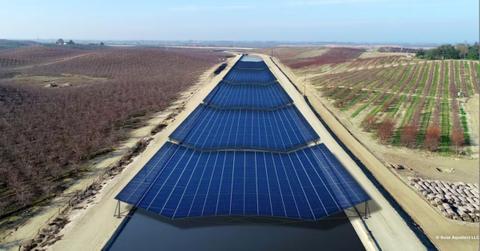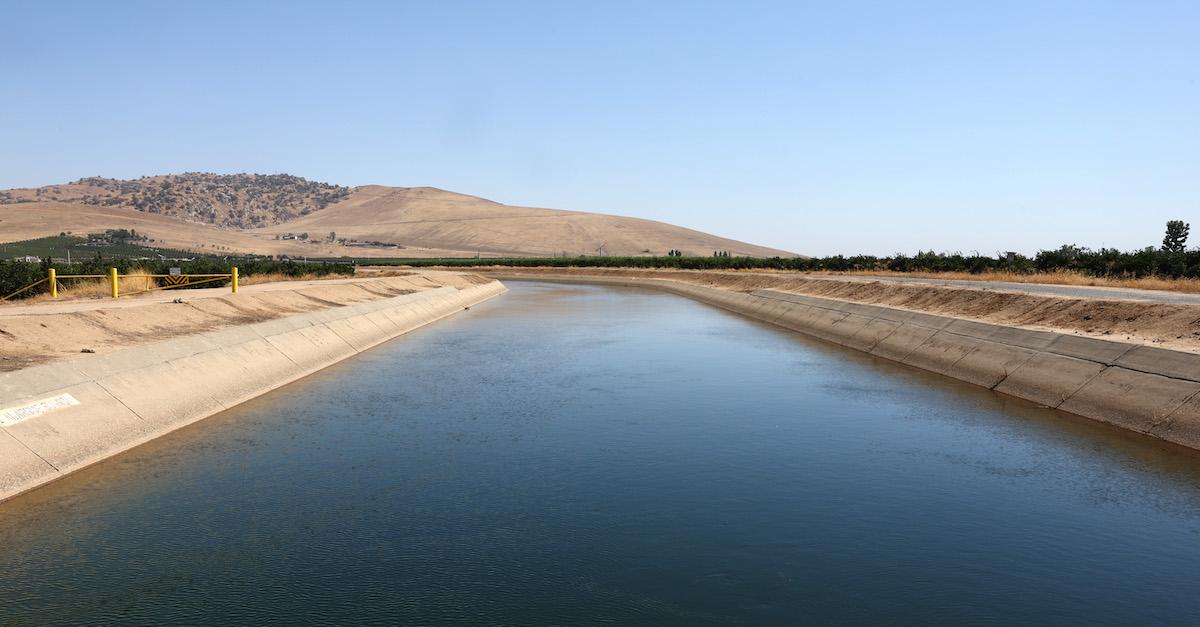California Fights Drought and Energy Crisis With Solar Panel “Canopies” for Water Supply Canals
Published Aug. 29 2022, 12:01 p.m. ET

A rendering of solar panels over a canal.
California's latest investment is killing two birds with one stone, in the best way possible.
To fight the ongoing drought — and to simultaneously produce renewable energy — the California Department of Water Resources (DWR) is investing several million dollars in building solar panels atop water supply canals. This will not only produce clean, renewable energy for the state, but it will also improve water conservation efforts.
"Most of California’s rain and snow falls north of Sacramento during the winter, while 80 percent of its water use occurs in Southern California, mostly in summer. That’s why canals snake across the state – it’s the largest such system in the world. We estimate that about 1 to 2 percent of the water they carry is lost to evaporation under the hot California sun," Roger Bales, a professor of engineering at UC Merced, who is working on this project stated, per Electrek.
"In a 2021 study, we showed that covering all 4,000 miles of California’s canals with solar panels would save more than 65 billion gallons of water annually by reducing evaporation," he continued. "That’s enough to irrigate 50,000 acres of farmland or meet the residential water needs of more than 2 million people... this approach would help California meet its sustainable management goals for both water and land resources.

What to know about California's latest investment:
California's DWR has invested $20 million in a sustainability project called "Project Nexus," according to CBS News. The project involves the installation of solar panel "canopies" atop 4,000 miles of Turlock Irrigation District (TID) canals in Central California, to simultaneously combat drought and produce clean energy.
Project Nexus, which was initially announced in February, will start construction in the fall, and will ideally be completed by the end of next year.
Aiming to produce 13 gigawatts of energy capacity, Project Nexus will also help achieve Gov. Gavin Newson's goal to source 60 percent renewable energy by 2030.
According to Reuters, Project Nexus is based on a similar ongoing project in India. This particular project will be the first of its kind in the U.S, modeled after a research paper written by University of California Merced project scientist, Brandi McKuin, back in 2021.
McKuin told Reuters she's really looking forward to seeing her research come to life. Her team, as well as those from Turlock, hope that if it's successful, projects of the like will become increasingly common nationwide.
"If this is something that works on these first two miles of Project Nexus that we're doing, there's the potential that this could scale to multiple locations," Josh Weimer, Turlock Water & Power's external affairs manager, told Reuters.
How do these solar panel canopies fight drought?
It makes sense that solar panels would combat the energy crisis, by producing renewable clean energy for central California residents. But how is it combatting the drought?
According to the Times of San Diego, creating solar panel "canopies" for the canals will not only use other land for solar farms, but it will also reduce evaporation in those small bodies of water that are a main source for water supplies.
Additionally, the canopies will prevent aquatic weed and algae from growing, which will save exponentially on cleaning costs.
Ultimately, this will save up to 63 billion gallons of water. That's enough to irrigate upwards of 50,000 acres of farmland, and to supply 2 million with drinking water. Needless to say, this is a serious step forward for California-based environmentalists.